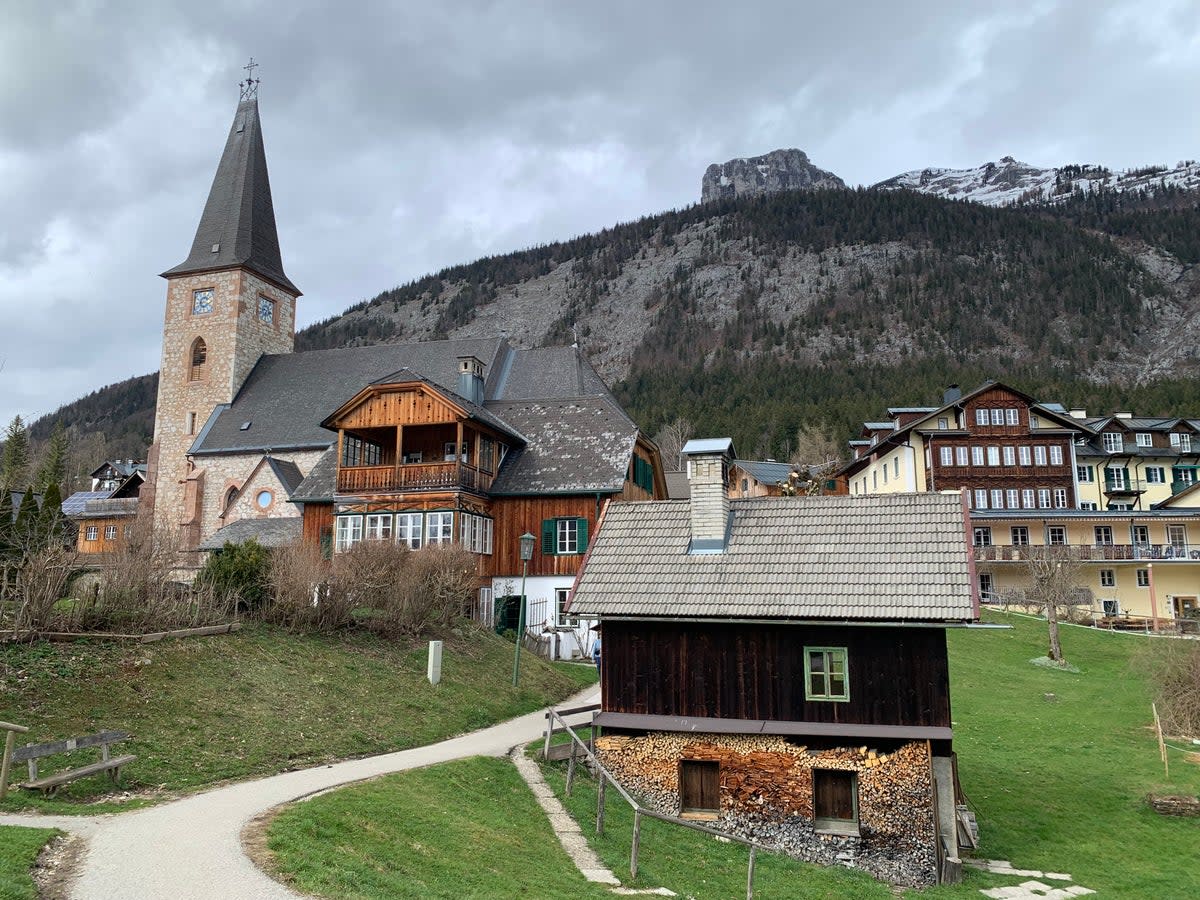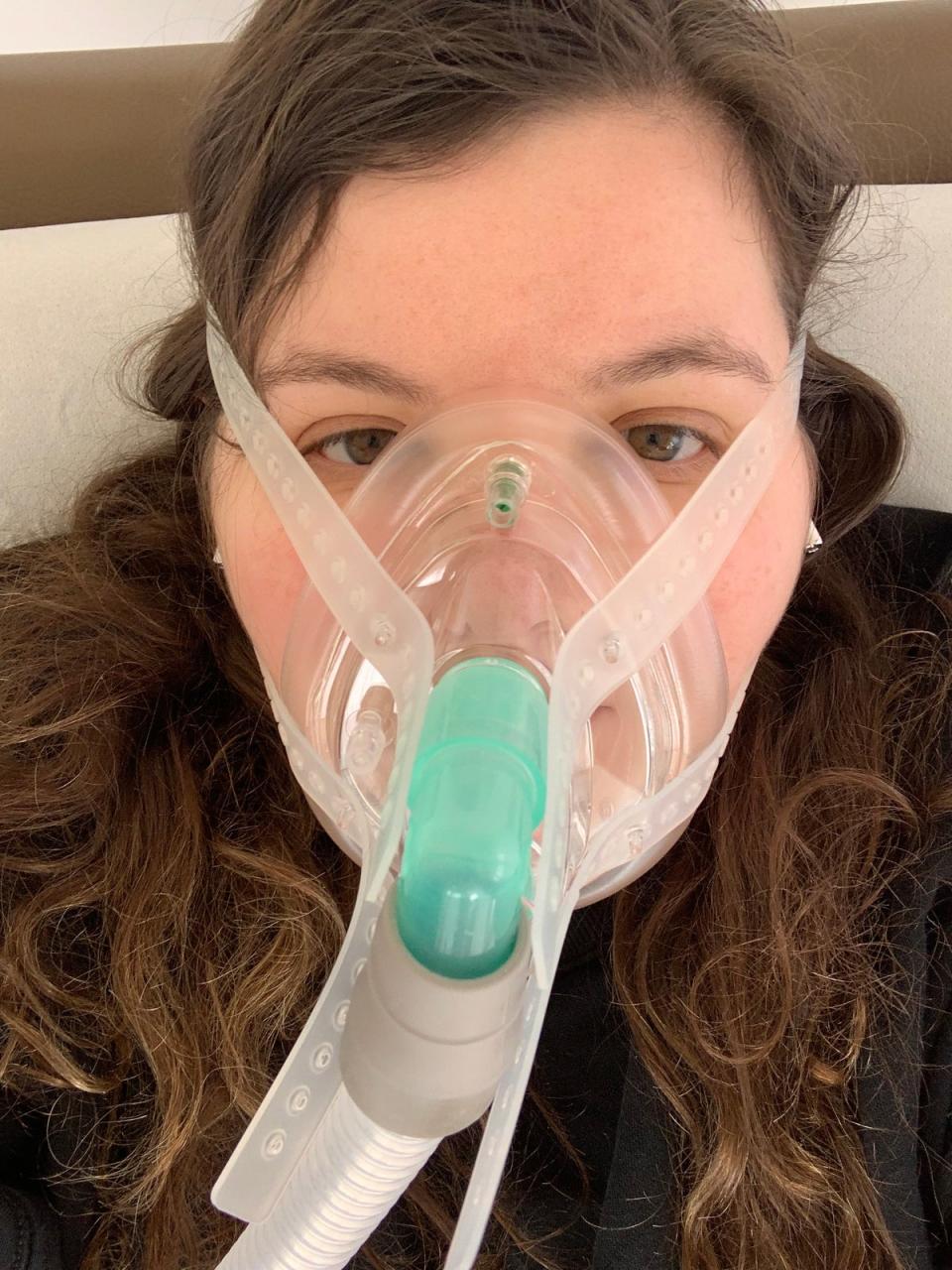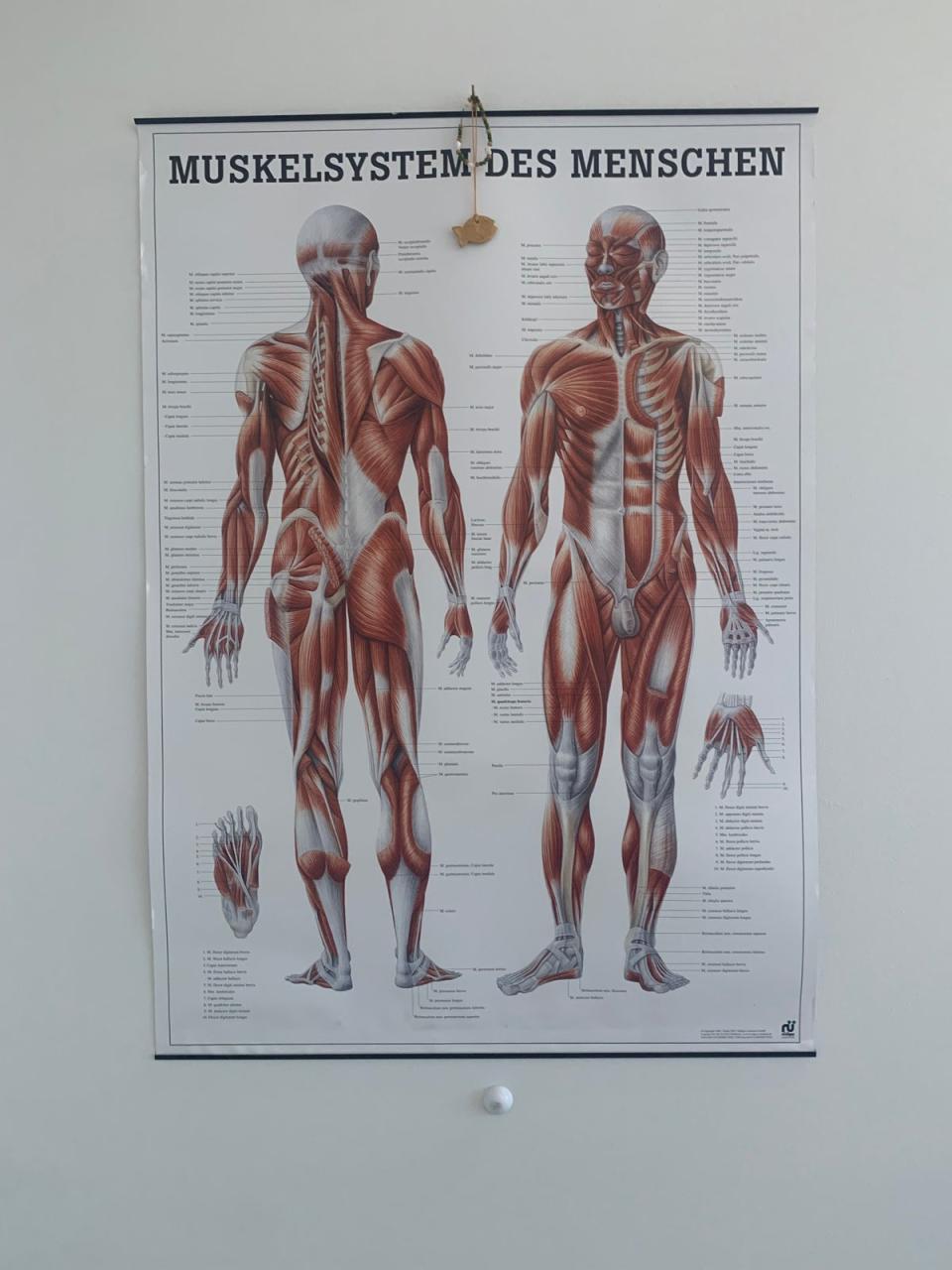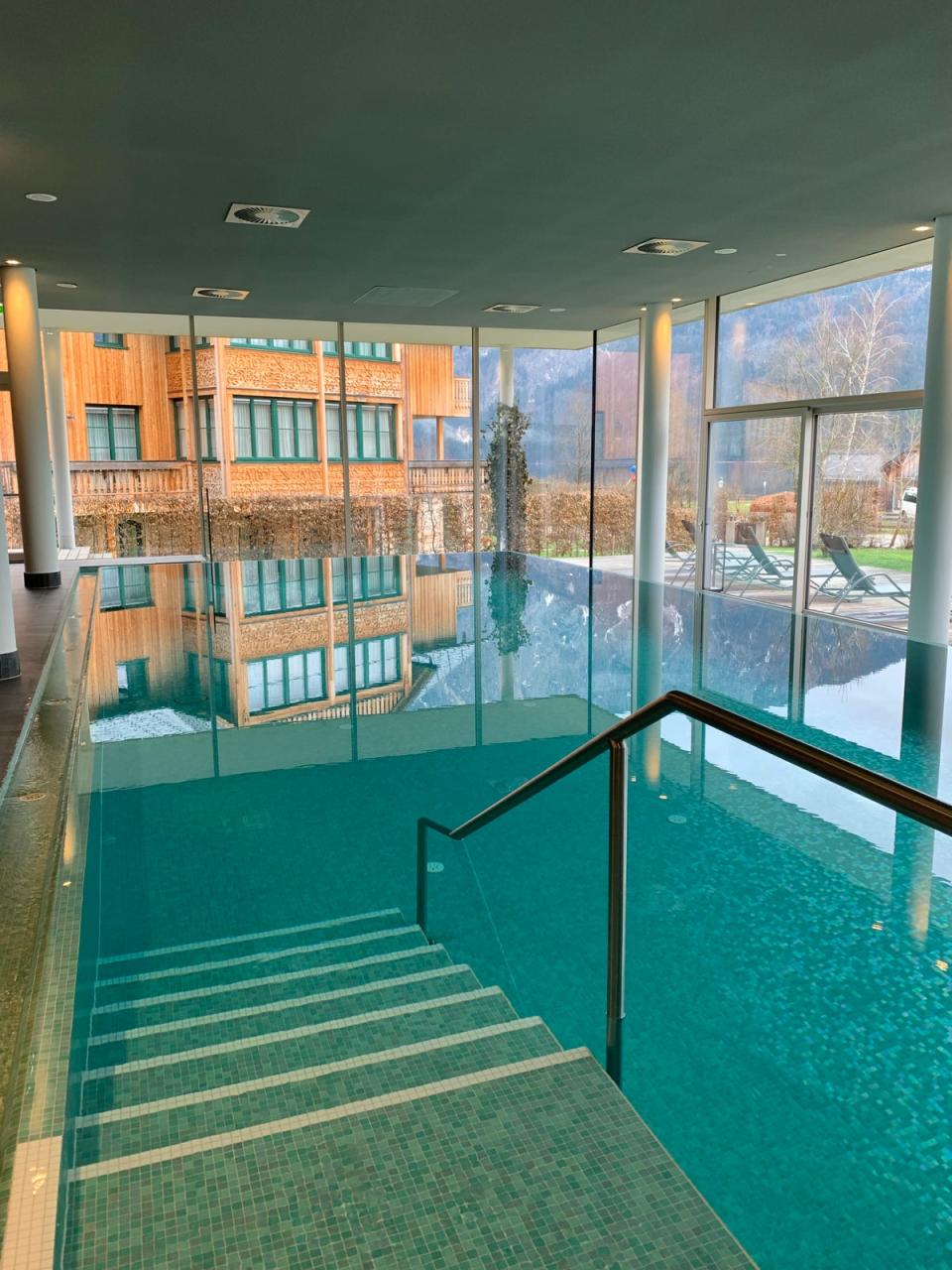How I finally (almost) beat long Covid

In July 2021 I was admitted into intensive care with type one respiratory failure caused by Covid pneumonia, witnessing people on ventilators slowly deteriorating around me. For my recovery, I spent the next six months regaining the ability to walk and breathe normally. It’s now nearly two years later and every day since my hospital admission has been a heavy reminder of the effects Covid still has on my life.
Routine tasks like washing the dishes or sitting up straight at a desk or dining table can cause my whole body to cramp up. I’ve often had to excuse myself at a dinner with friends and spend 10 minutes doubled over in pain in a disabled toilet. To give you a visual: imagine Peter Parker turning into Spider-Man for the first time? It’s like that. I even had to leave my best friend’s wedding after the speeches; sobbing and apologising because I was in agony and only a strong painkiller and sleep could stop it.
Imagine Peter Parker turning into Spider-Man for the first time? My long Covid is like that
I called my GP to ask about treatment options and was told, ‘We’re not having great results with the clinics but there’s a podcast I can recommend to you...’ I muted my phone and turned to my boyfriend. ‘Did this doctor just prescribe me a podcast?’ The NHS had done all it could for me — to be fair the doctors and nurses had saved my life in the first instance — but the momentum for treating long Covid symptoms has undoubtedly been waning over the past year. The Office for National Statistics estimated that 1.1 million people in the UK currently suffer from long Covid, and yet from 5 July to 1 August 2021, only 5,737 patients were referred to specialist NHS clinics.

Since my diagnosis, on an almost daily basis, I spend hours trawling the internet for a solution. I came across a slew of high-end wellness centres claiming to treat post-Covid symptoms opening up all over the world, from Spain to Sri Lanka. Sceptical but hopeful, I shortlisted the places that seemed promising. Mayrlife (formerly know as Vivamayr), the slick and world famous Austrian facility, stood out: not only did the centre have a stellar reputation for deftly combining science with holistic approaches to treatments, but also that your experience of its famous ‘Cure’, as it’s called, is completely tailored to each individual.

After a short flight from Gatwick to Salzburg, I was driven to the clinic surrounded by the formidable mountains of Altaussee that had ominous storm clouds gathering at their peaks. On arrival, I was welcomed by an emerald-green tiled fireplace glowing in the lobby and, oddly, complete silence. Strange, I thought, there’s usually at least some flute-led spa music at this sort of place. Finally in my room, I was pleased to find out that this was nothing like the intensive care ward. I had been apprehensive that the facility might feel clinical but I was greeted by plush, green velvet sofas, huge windows and a private balcony with a beautiful view. I thought about the day I eventually left the ICU, as the hospital porter wheeled me over to the general Covid ward at twilight. It was the first time I’d seen outside or felt fresh air on my face in more than a week. I found myself crying in my room at the memory, stunned that I’d managed to get on a plane and travel to another country alone when just two years ago my sister had to push me in a wheelchair, wash my hair and help me up the stairs to bed.

My treatment began with an initial medical examination. The first day was a head-spinning information overload and on the second I had a panic attack and vomited during my blood tests, repeating my apologies of, ‘I’m so sorry, I have PTSD about medical things’. I was mortified but quickly soothed by the kindest and most patient doctors and nurses I have ever met. A metabolic analysis discovered that I breathe in and out 16 times per minute (the average for a healthy adult is usually five to six times per minute), a suspected hangover from the trauma of not being able to breathe. This was combated with multiple one-on-one breathwork sessions, personal medical counselling and intermittent/interval hypoxy training — essentially altitude training but lying down on a leather recliner watching the snow fall with a HermeÌs-style blanket on your lap. After multiple sessions, I’m told doctors see vast improvements in a patients’ oxygen intake, better circulation and reduced in ammation throughout the body.
Next up was nasal reflex therapy in which two essential oil-soaked Q-tips are shoved up your nose and a nurse comes back every few minutes to push them in deeper. Afterwards, I was ushered into a salin air inhalation booth. This is, in essence, a room where you inhale incredibly salty air, like an extreme version of sending a sickly Victorian child to Cornwall for a deep breath of sea air. I left with Margarita style salt rings around each of my nostrils (God, I miss Margaritas).
As for the food? The Mayr Method’s ‘Cure’ places an enormous amount of importance on whole body healing, starting in the gut. My detox began with vegetable broths for dinner — though, Gwyneth I am not. The first couple of nights I went to bed with my tummy rumbling but as time went by I started to find that I wasn’t as hungry as I expected.
I left with Margarita style salt rings around each of my nostrils. God, I miss Margaritas
After three treatments of cryotherapy (at –100F, FYI), lymphatic massages, an extensive new supplement regimen and daily infrared sauna sessions, the pain and inflammation in my spine and joints slowly began to evaporate. Normally I get a horrible shooting pain down my spine when I go from sitting to standing, so I always brace myself... but for the first time in months, the pain never came. I felt stronger and like I had a plan of action as my stay drew to a close. Although I don’t think the ‘Cure’ cured my long Covid, I do believe my condition greatly improved (along with my understanding of the balance of inflammation in the body). I also found that the centre is hugely invested in teaching guests how to continue their treatment once they head home, offering seminars throughout the stay. True, wellness clinics such as this might seem like they’re accessible only to the wealthy but I also discovered that Mayrlife also offers a day clinic on Harley Street and provides nasal reflex therapy kits (which made my two-year daily headaches nearly disappear) on its website so I could continue managing my symptoms at home.

In my final counselling session at the clinic, I found myself explaining to my therapist about how I’ve spent the past two years trying to get back to the person I was pre-Covid. She stopped me gently, and said: ‘You keep saying you’re trying to get back to the person you were before, but that person is gone. And from what you’ve told me today, the person sitting in front of me is so much stronger than that person ever was.’ I hadn’t thought about it that way. She was right.
Rooms at Mayrlife Medical Health Resort Altaussee start at £390 per night; the Post-Covid programme costs £6,700 for the recommended two-week stay (mayrlife.com).


